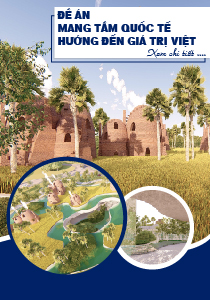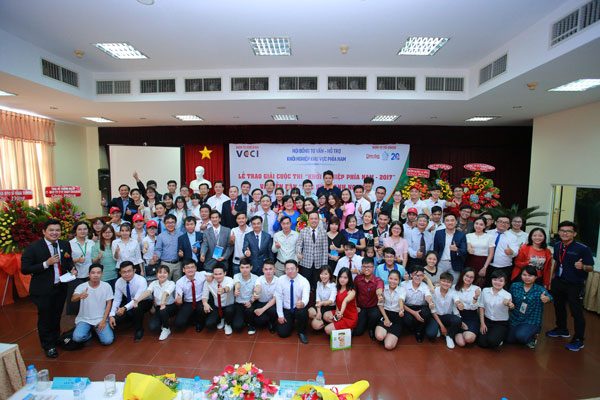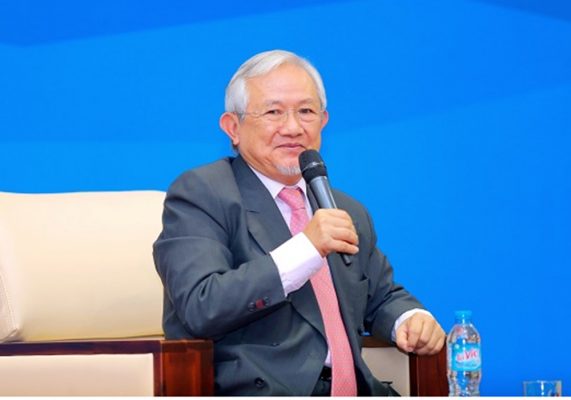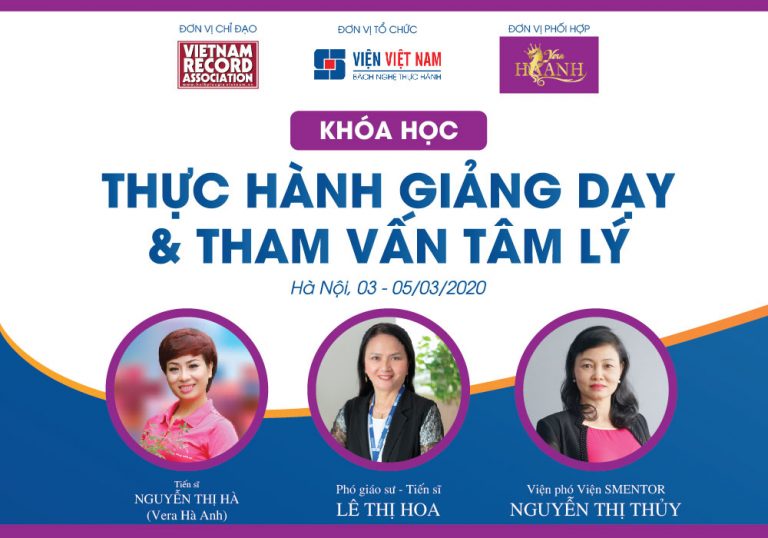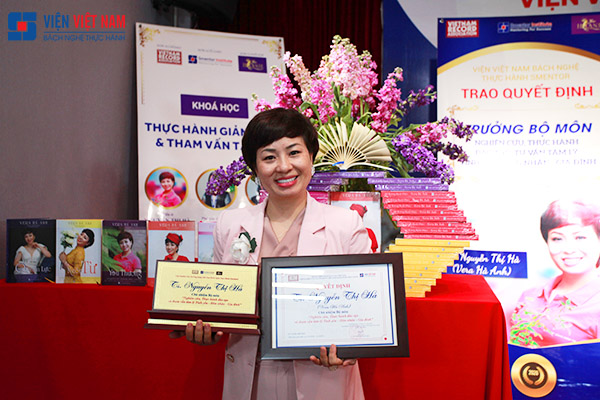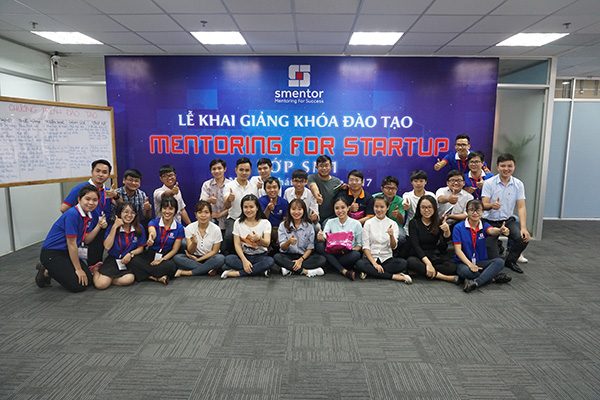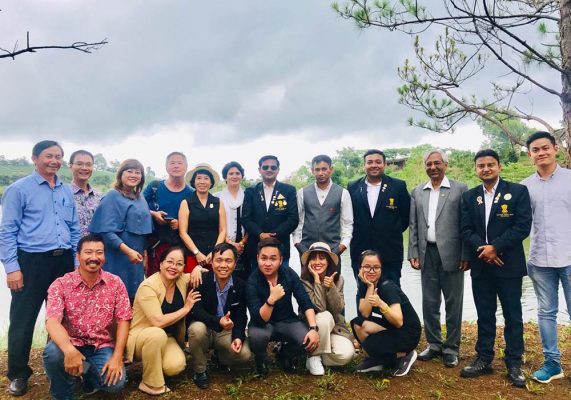Scientific research is one of the most important tasks for universities, in which the core team is lecturers and researchers. One of the criteria to evaluate the quality of scientific research of the faculty in particular and of a university in general in the current global integration context is the number of research works published in peer-reviewed journals in the prestigious domestic and international press. The article focuses on sharing some information and experiences in preparing for international publication, focusing mainly on the field of social science and for lecturers and researchers who do not have much experience in the field of science and technology in this field. In addition, the author also aims to discuss some solutions to remove difficulties and increase the number of quality international publications in the coming time.
1. List of prestigious international journals.
– Select reputable international journals to research, research, and submit articles.
To prepare for the process of publishing research works in prestigious international journals, the first and most important thing is that the authors need to learn the list of recognized scientific journals and especially the list of recognized scientific journals. List of prestigious international journals. On the basis of a searchable list for a field, such as social science, the researcher continues to search for appropriate journals with specialized specialties and research content to choose to submit articles to the journal solstice. The final consideration is to assess the quality of the articles for which of those journals are technically appropriate. To assess accurately, the author needs to read and refer to the most recent articles published in that journal, especially can rely on the impact factor (IF) to assess the rigorous level of the study Journal. Thus, authors who are just starting to learn about international publications need to distinguish and grasp: ISSN codes, Scopus and ISI lists, impact factor (IF), and citation index ).
– ISSN for journals and relationships with prestigious international journal catalogs (ISI and Scopus).
ISSN stands for “International Standard Serial Number”. When a journal is assigned an ISSN, it can be searched in the international ISSN database system. In Vietnam, from March 11, 2005, UNESCO officially accepted Vietnam as a member state of the International ISSN Network to organize the registration and grant of international standard codes for serial publications in the territory of Vietnam. The unit directly designated and responsible for receiving ISSN code registration in Vietnam is the National Science and Technology Information Administration under the Ministry of Science and Technology. Regarding the code registration conditions, the ISSN number is not related to the quality of the journal but is only valid as an “identity card” in the global information system, used to look up the journal’s origin. , release history, the publisher responsible. Specifically, about the conditions for registration and maintenance of the ISSN, the authors can find out more at the website of the National Agency for Science and Technology Information, Ministry of Science and Technology (1).
So, what does the ISSN number have to do with the prestigious international catalog of Scopus and ISI? Not all journals with ISSN numbers are included in the current prestigious international journal catalogs such as the Scopus and ISI catalogs, while the journals in the Scopus and ISI catalogs each have their own ISSN numbers. Therefore, the number of journals with ISSN codes will be much larger than the number of journals in the ISI and Scopus catalogs. According to current statistics, there are about 1.3 million international scientific journals that have been granted ISSN codes, of which only about 10,000 of these journals belong to the ISI list and are considered the most prestigious journals in the world. present world (2). Furthermore, about 70% of the journals included in the ISI catalog are also in the Scopus catalog.
The relationship between the ISI, Scopus, and ISSN portfolios can be illustrated as follows:
ISI – Institute for Scientific Information – has participated in selecting the quality of journals in the world in a rigorous and strict manner with high professionalism and science. Although there may be many debates, this is a list recognized by many countries and used as a criterion to evaluate the quality of science. ISI includes a collection of journals in the fields of natural sciences and technology (SCI, SCIE), social sciences (SSCI), and humanities and arts (AHCI). To be able to look up a journal that is in the ISI list, you can go to the link below and use the search tools (search by journal title, lookup by ISSN code) (3).
– List of international journals belonging to the SCI group (Science Citation Index)
http://www.thomsonscientific.com/cgi-bin/jrnlst/jlresults.cgi?PC=K
– List of international journals belonging to the SCIE group (Science Citation Index Expanded)
http://www.thomsonscientific.com/cgi-bin/jrnlst/jlresults.cgi?PC=D
– List of international journals belonging to the Social Sciences Citation Index (SSCI)
http://www.thomsonscientific.com/cgi-bin/jrnlst/jlresults.cgi?PC=J
– List of international journals of the Arts and Humanities Citation Index (A&HCI)
http://ip-science.thomsonreuters.com/cgi-bin/jrnlst/jlresults.cgi?PC=H
– Total ISI Directory: http://www.isi-thonsomreuters.org/au.php
The Scopus directory is also a reputable journal directory with rigorous reviews built in 2004 and owned by Elsevier Publishing (Netherlands). As mentioned, about 70% of the ISI journal catalog is in Scopus and only includes articles from 1995 onwards.
http://pkhcn.duytan.edu.vn/media/22890/31_qd_hdqlq-2016-1.pdf
To find out if the articles are in the Scopus category, you can visit the website with the following link:
List of SCOPUS journals: http://www.scimagojr.com/ or
https://www.elsevier.com/solutions/scope/content
In the ISI and Scopus categories, whether a journal has an impact or not depends on several metrics: the IF impact index, the number of journal views/downloads, and the grouping of journals at the level of authority. influence or influence is different.
In addition, the authors can refer to the list of prestigious international journals in the field of natural or social sciences of the NAFOSTED fund, related to applying for scientific research grants from this fund. Refer to the document link:
http://pkhcn.duytan.edu.vn/media/22890/31_qd_hdqlq-2016-1.pdf
Thus, if you want to publish articles in the group of ISI or Scopus journals, the authors should research a number of journals specialized in their own research, search for suitable journals, research, and read published articles. published in that journal and determine the most appropriate journal to publish your research results. Besides, it is also possible to consult more scientists in the same field who have published in international journals to get more reasonable decision information.
- Academic language and article format and layout.
Articles for international publication should be written in academic language. Therefore, this may be difficult for some authors who have not undergone specialized study and research abroad. However, regularly reading research books and international scientific articles in foreign languages will support the group of authors to have an appropriate vocabulary and writing styles. Authors should write directly in English or a foreign language the journal uses with a foreign language mindset instead of writing in Vietnamese for translation. Academic Language requires writers to understand the narrow discipline that they discuss in the article, to use the correct terminology, concepts, scientific categories, and theories in the field of study. In addition to self-editing, the author or group of authors should also ask a qualified foreigner to proofread.
The second is the article presentation format, article structure, and requirements for citation in the article. Each journal may have different requirements, so it is essential to carefully research the requirements on the magazine’s website. Typically, quality international journals have websites that clearly outline the article requirements, format, structure, citations, and references, and include instructions on how to create them. Online journal submission account.
Typically, a research work published in an international journal includes the following specific sections:
Title: A sentence that briefly but concisely and accurately describes the main problem that the research discusses.
Abstract: briefly summarize the main content and results of the publication, depending on the journal, there will be different requirements in length, 300 or 500 words or more. The contents can be described succinctly in the abstract: research purpose, time, space, research object, research method, information collection, main results.
Introduction: Asking questions about the reason for the research, the importance of the problem along with the evidence, an overview of research papers related to the problem, the theoretical basis, the theory discussing the problem, the studies has been conducted in different timelines, countries, and regions discuss the issue from different angles and approaches, common perceptions on the problem, findings on related issues have been discussed. On that basis, the author clearly states the research direction, individual/group analysis, approach to problem research, research purpose, research question.
Research methodology: This is also the main section to be headed by the author and normally must be accessed if Scientific research. The author will normally have to show the basis of the methodological research, the appropriate selection management method to collect information, the method selection model, the size model, the design study (number of variables, the study researcher), and the strategic information gathered.
Main body: The analysis presents the main results obtained through the data analysis, corroborates the answers to the research questions, and proves the hypotheses posed.
Discussion: Discuss research findings in a broader context: compare research results with related works, discuss general knowledge/knowledge findings within the framework of the research topic, Differences, new points in research findings, uncertain results, and doubts need to continue to be researched to get more bases, pieces of evidence and findings to strengthen the doubts in other studies. Pre-set rescue. More broadly, research can discuss experimental results, practice, and related theoretical conclusions, enriching existing theories or adding and developing new theories.
Conclusion: Summarize the main findings of the article, the limitations/limitations of the study, if any, and suggest issues that can be further researched.
Acknowledgments: Thank you to individuals or organizations that support in the process of research and writing: individuals who assist in collecting information, individuals, organizations that sponsor research funds, experts who give advice and advise, questions during the research.
References: Documents or references are arranged or listed according to the detailed guidelines required for each particular journal. It is possible to use some useful software to support and manage the citation process such as EndNote & Bibtex. Note, the number of references represents a part of the quality of the article, it shows the depth of research on the issue the author is discussing in the article.
Appendices: The information and data that support the clarification of the research results, but should not be left in the main article content to lose the logic or focus of the article, but useful if independent the author wants to learn more.
- The quality of the article and the review process.
The quality of content published by the journal can be based on a number of factors:
Published works usually have to be large-scale, influential, high-reliability, objective and appropriate research methods, and especially contribute new things. for scientific development. The work can be a national, provincial/city research or a case study, but it is important to study issues that are novel and have a scientific research methodology that demonstrates credibility. high trust. The research needs to have a justification on the methodology, theoretical basis, research methods and appropriate data collection methods to answer the research question, good research design and standards to inform information. obtained with high reliability. Normally, the justification of research design, research methods, methods of information collection, research samples, if applicable in the research, is one of the mandatory parts to be presented in a scientific paper. except for the publication of research overview or the discussion and development of research theory. In addition, the research process needs to be transparent, and the information and data collected should be objective and verifiable. The novelty of social science research is sometimes not as clear as natural science, but it also needs to be explained by the author in the article: new in research methods, new in theory building from practice. , new findings from research results,…
The quality of the article will be assessed through the comments of the reviewer. Passing the review rounds and being accepted, then the quality of the article meets the requirements of the journal and will be considered for publication. After the article is submitted to the journal, if the first step of censorship is achieved, the form, layout, references, and citations will be forwarded to the appropriate reviewers, usually two. Reviewers work very responsibly and thoroughly. They may ask to explain or supplement the content, unclear points in the article, they also ask questions that require the authors to explain and clarify information, data and how to calculate numbers. data, arguments without clear grounds, additional information and data deemed necessary. The author of the article must be responsible for explaining in detail the requirements of both reviewers. Reviewers can ask the author: to correct and explain the information provided, to explain and review data and information that are not logical or reasonable, or even supplement information and data if not. convincing enough. After each explanation, each reviewer will review the whole, continue to raise questions, issues they still have concerns or information, evidence, data if not guaranteed or inconsistent. The process of explanation to meet the review request only stops when the reviewer is satisfied with the transparent evidence given by the author, the author’s reasonable and scientifically grounded arguments for the overall publication. quality and meet the criteria of each journal. Even some of the requests of the reviewers who do not correct or change or add, but also need to be explained by the author for the reasons for those decisions. The process of critical explanation can be seen as a “knowledge dialogue”, through which to learn together, and towards improving the quality of the article, taking responsibility for the information published before it is released to the community. scientists around the world. Normally, for articles submitted to prestigious journals in the ISI or Scopus system, the review period can last from 6 months to more than 1 year. Therefore, it can take more than 1 year to be approved for publication from the time of submission. The more reputable the journal, the higher the percentage of articles submitted to it is rejected, even up to 50% of the number of articles submitted. According to the Professor. Nguyen Van Tuan, there are some basic reasons why the article was refused to be published in an international journal:
– First and foremost is the lack of novelty, which is the leading cause (80% of all rejections due to lack of novelty), especially in leading journals such as Science and Nature.
The second is about the research method: the method is considered the skeleton of the article, there is an opinion that reading the method can assess the level of the research. If the method is unconvincing, unfounded, and unscientific, it is also easy to be rejected.
– Third: include factors such as presentation and data analysis, English and article content not suitable for the journal, not the focus of the journal (5).
Besides the above issues, here are some other notes authors may consider adding:
Some research in areas related to people and communities, such as research in the fields of sociology, psychology, culture, religion, human rights, most international journals, etc. The criteria in the ISI/Scopus category all require proof that the research has undergone ethical approval in the study. Research is only published if it is proven to have passed ethical approval and the research results do not significantly affect the psychology, health, development or do not reveal information to protect research subjects. , at the same time, the board also requires the author to take measures to protect the research subject during the conduct of the research and after the research is published and must be met during the conduct of the research.
In addition, when an international publication is planned, in the research plan of the author or group of authors, there should be budget estimates for the publishing process: language editing costs, publishing costs. Some journals have no cost to publish or publish, but there are also some journals that will require a contribution to the cost of review and publication, this information is often transparently published by the journals right on the website. its website.
Besides the above basic factors, in fact, each major and each specialized field may have its own requirements and difficulties in the process of publication. The author’s consultation with researchers who have extensive international publishing experience in their field will contribute to a smooth approval process for publication.
- Some proposals to strengthen scientific research activities towards publication in prestigious international journals.
In order to encourage and promote the process of international publication among lecturers and researchers of the Academy of Journalism and Communication as well as throughout the Academy system, the author gives some suggestions on solutions such as:
– Firstly, the Scientific Management Board and the units should start by disseminating the list of international journals belonging to ISI and Scopus so that researchers can research together and select the list of journals in the relevant field. nearest majors of each research institute, faculty or subject. On that basis, staff and lecturers begin the process of researching and selecting journals suitable for each faculty, research institute, departmental group and each researcher’s expertise.
– Second, in order to become an author of scientific articles in international journals in the future, researchers need to first become readers of journals relevant to their research major. Regular reading of newly published works in relevant academic fields will help scientists improve their specialized foreign language skills, know about the structure of articles and, importantly, improve and update them regularly. through the expertise of colleagues around the world. Such material can initially be used for citations, overviews of the author’s research, for publications in national journals, and for the preparation of international publications.
– Third, the Center for Scientific Information should advise and propose to the University leaders to consider cooperation and purchase online access to a number of prestigious and necessary international journals for training majors. in-depth study at the Academy so that staff, lecturers, students and students have regular access to newly published works in specific fields of study and research. The fact that there are many international journals in the ISI/Scopus directory is not free but requires a fee, leading to major barriers in the process of accessing and updating the quality scientific information published. Hopefully in the not too distant future, lecturers and researchers in the Academy will be able to access reading and researching international journals from the Academy’s electronic library.
– Fourth, pay attention to increasing the participation of capable staff and lecturers in high-quality and invested research at the Academy system, because only when participating in high-quality research have a basis for progressing to publish quality scientific articles. It may be necessary to take into account the mechanism of openly recruiting qualified and potentially internationally published members to participate in large-scale research projects at the Academy system, with incentives and binding. international publication requirements for these studies.
– Fifth, towards the strong development of international cooperation in research towards international publication. These cooperation will help staff learn and participate in research with groups of experienced international experts, so that there are internationally published products with the help of international experts. Extensive experience in publishing in international journals.
– Sixth, the Scientific Management Board should pay more attention to developing solutions to increase international publication, including studying the experiences of other universities in the following points:
+ Establish scientific research groups towards international publication. + Develop appropriate mental and material reward regulations for individuals with valuable international publications.
+ Develop spending regulations related to expenses for international publication, attend seminars with international publication.
+ Building a fund for the development of young science: encouraging and supporting young lecturers and researchers who are qualified to actively participate in research oriented to international publication.
In addition to the above solutions, each lecturer and researcher needs to actively learn to prepare the necessary knowledge and skills, cultivate the qualifications to meet the requirements of participating in quality scientific research, proactively prepare for future international publications.
Publishing science in quality international journals is an inevitable trend to develop science and knowledge in general worldwide. Publication in international journals is to contribute to bringing research results and new findings in domestic research to the international scientific community, not limited by borders or language differences. Scientists participating in international publications are responsible for their own roles, contributing to deepening their knowledge and understanding of different fields as well as disseminating that knowledge widely. across the international community. In addition, new findings published on international forums continue to create the foundation for further research to go further, adding new insights and knowledge on the way of knowledge discovery and understanding. know about people, nature and society in general. To promote more international publications in the fields, especially the humanities and social sciences, besides the initiative and efforts of each lecturer, researcher, investment and construction A methodical development strategy of the Academy as well as each research institute and specialized faculty is essential.
(1) National Ministry of Science and Technology, Registration and issue of international standard number for serial publication (ISSN), at page:
http://www.vista.gov.vn/Default.aspx?tabid=129&IntroId=282&temidclicked=282&language=en-US
(2) Tran Van Nhung, “Some information about international standard codes for journals and books, about classification of scientific journals and how to present an article in scientific journals”, Manual considered and recognized for meeting the standards for the title of professor, associate professor in 2016, Bach Khoa Publishing House, Hanoi.
(3) Vietnam Academy of Science and Technology, Journal of ISI (Institute for Scientific Information, USA), at page:
http://gust.edu.vn/vn/html/tap-chi-danh-muc-isi
(4) (5) Nguyen Van Tuan, How the research is censored by the International Journal, Vnexpress, March 24, 2018, at page:
Duong Thi Thu Huong
Academy of Journalism and Propaganda
(According to the Journal of Political Theory and Communication)
